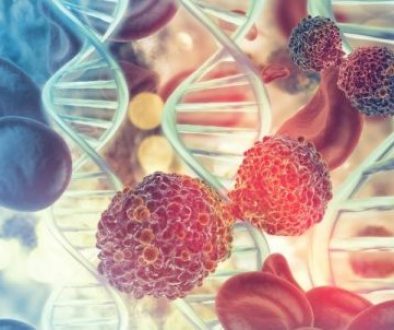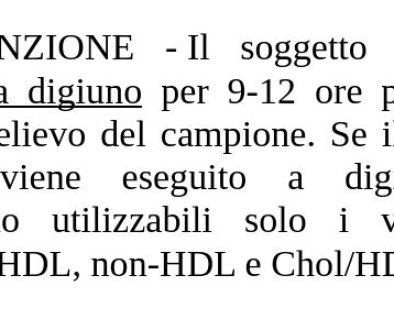The terminal cancer delayed by Vitamin C
Interview with Linus Carl Pauling, Double Nobel Peace Prize and chemistry

PETER BARRY CHOWKA: Dr. Pauling, could summarize the role that vitamin C has in human health and its importance in the health of the whole nation?
LINUS PAULING: Vitamin C – ascorbic acid, sodium ascorbate or calcium ascorbate – E’ involved in a large number of biochemical reactions in the human body. Two of his major interactions are strengthening the immune system and the synthesis of collagen, a very important substance that holds together the human body.
Collagen strengthens the blood vessels, Skin, muscles and bones. Man cannot’ make collagen without Vitamin C. What impressed me’ 20 Years ago’ was when Irwine Stone (Ph.D.), indicate’ that most of the animals, excluding humans and monkeys, producing Vitamin C (2). Do not rely to food or vitamin tablets, animals produce vitamin C in the liver in proportion to their body weight. For the proportions grown man should be an average of 10-12 gr (12.000 mg) per day. This value’ 200 times higher than the RDA (Raccomended Dietary Allowance – Recommended Daily Dosage) – 200 Sometimes compared to what people get in an ordinary diet.
THIS IS’ the reason for which we should take 200 times the amount of vitamin C that the FNB (Food and Nutrition Board) we recommend. The dosage of 60 mg determined by the RDA and’ too far and emphasizes the important need’ taking supplements of Vitamin C.
CHOWKA: During the last 20 years she has studied cancer patients who were treated with high doses of vitamin C. He recently published several papers with Abram Hoffer (M.D., Ph.D.) concerning the treatment of cancer with vitamin C (3,4). The results seem to be very promising.
Pauling: Oh, AND! I became interested in vitamin C and cancer in 1971 and I began to work with Ewan Cameron (M.B., Ch.B.) primary surgeon at Vale of Leven hospital in Scotland. Cameron case 10 grams of vitamin C a day to patients with terminal cancer no longer’ negotiable (5). These patients were then compared by Cameron and me to patients with the same type of cancer to the same terminal phase who were treated at the same hospital but by other doctors — doctors who did not use vitamin C, but instead conventional treatments.
The terminally ill treated by Cameron They lived much longer’ Long comparing them to those who did not take 10 grams of vitamin C daily. The other patients lived an average of 6 months after they were pronounced terminal, while patients Cameron They lived an average of 6 years.
I recently worked with Hoffer, a physicist who lives in Victoria (British Columbia, Canada). Hoffer stretch’ 300 Cancer Patients (6) and recommend’ in all of them essentially the same treatment of Cameron. But about a quarter or a third of the patients did not follow the treatment for one reason or another: the family doctor could have told them that high doses of vitamin C would kill them or patients may have had a stomach upset and did not want to continue to take vitamins.
Patients terminally ill cancer patients who did not follow the regime of Hoffer They had a survival time of about 6 months. Those who followed the therapy Hoffer obtained even better results than those of Cameron. On average they lived about 12 years after they were diagniosticati untreatable terminally ill.
The therapy Hoffer It included 12 grams of vitamin C daily, approximately the same amount’ of Cameron, but also it included quantities’ significant other nutrients: 800 U.I. Vitamin E, 1000 The 2000 mg of niacin, big quantities’ other B vitamins and vitamin A in the form of beta-carotene. Apperentemente the other vitamins with vitamin C and give even greater defense against cancer.
For a long time Cameron and I said that every cancer patient, starting as early as possible in the course of the disease, should take 10 grams of vitamin C in addition to the appropriate conventional therapies. Now, together with Hoffer, I argue that every cancer patient, starting as early as possible in the course of the disease, should take 10-12 and piu’ grams of vitamin C, 800 U.I. Vitamin E, high doses of other vitamins and 200 mcg of selenium daily. I think the therapy Hoffer E’ therapy that cancer patients should follow – always in addition to appropriate conventional therapy, dove “appropriate” It means a conventional therapy that has shown its value for patients with the same type of cancer.
CHOWKA: She sees progress in the war on cancer?
Pauling: AND, I think so. Ma sara’ thanks to vitamins rather than drugs. Surely.
CHOWKA: So’ you see progress in potential of vitamins and antioxidants and not many in the conventional treatment that we have seen up to this point?
Pauling: Certainly not looking for wonder drugs, No. I feel strongly that vitamin C and other orthomolecular substances, such as lysine, will provide to effectively control cardiovascular disease much more’ how will’ possible cancer. I am very positive about the heart disease problems.
CHOWKA: She has recently published several studies on nutrition and the cardiovascular problems (7-8).
Pauling: The papers contain a simple argument. I have had many problems in understanding why’ people who have dealt with the cardiovascular problems have not thought about this when 20-30 years ago it was’ accepted by cardiologists that the primary cause of atherosclerosis and cardiovascular diseases is’ a lesion of the artery walls in a period of high stress. So’ I asked for two or three years ago “Why’ the walls of arteries undergo a lesion?”. Animals do not have these lesions are stressed. We have the lesions because’ our arteries are weak. Why’ I am weak? Normally, the animals' arteries are strengthened by collagen deposits. Man cannot’ produce collagen without vitamin C. Humans do not get enough vitamin C, So’ their arteries are weak. So’ as a result of various stages of development of cardiovascular diseases, arrive injuries. then, the lack of vitamin C and’ the primary cause of cardiovascular disease.
CHOWKA: We can think that the decrease in the incidence of cardiovascular diseases in this country is’ due to the fact that Americans are taking more’ supplemental vitamins, particularly vitamin C?
Pauling: Oh, AND. in 1979, Emil Ginter (Ph.D.) public’ a letter saying there was a parallel between decreased mortality’ due to cardiovascular disease and the increased intake of vitamin C in the United States (9).
CHOWKA: For many years she and her colleagues faced an uphill battle against the power of medicine to bring the Acquaintances of all his ideas about vitamin C and for nutritional medicine in general.
Pauling: I think that is’ Changing. Scientists tend to follow my recommendations, but I have many more’ problems with the medical establishment. They seem to be prevented, they do not have an open mind regarding the information available about vitamins and other nutrients in relation to diseases such as cancer and many others.
recently, during the last year, part of my efforts have been devoted to countering this strange position of the medical establishment: now they have accepted the fact that antioxidants from food decrease the incidence of cancer. But in their books and articles keep saying “but do not take vitamin supplements”. THIS IS’ completely illogical from my point of view. Besides give no valid argument to support these statements. A study by James Enstrom (Ph.D.) and his associates shows how valuable even a small amount’ in piu’ Vitamin C taken in the form of supplements (10).
CHOWKA: His comment on the medical establishment suggests another question. in 1982 she said she, according to his point of view, was the American public was responsible for the changes in modern medicine, especially for the important progress (11). E’ that still your view today?
Pauling: AND! I think the public laid him better replied to what was said by me along with Cameron and me and Hoffer than the medical world in general. Ten years ago people would say to me: “I told the doctor I was taking a gram of vitamin C per day or three grams of vitamin C a day and he told me: “Do not do it, You could kill you, those vitamins are poisonous””. Five years ago people began to tell me: “I told the doctor I was taking several grams of vitamin C per day and he told me: “Well, do not you fara’ male. Go ahead if you want. You probably will not have any benefit, but if you want to take them go ahead”.
Today they tell me that the doctors are apt to say: “All right, perhaps you are doing well”, especially when pazieni show look better than what the doctor is expected of them and they say: “I think the reason may be the high dosage of vitamin C and vitamin E that I am’ taking”. Doctors now tend to agree with this point of view. I do not know’ how many doctors take the initiative to prescribe vitamins to their seriously ill patients, but I think that many of them are at least open to this.
CHOWKA: What happens to the Linus Pauling Institute of Science and Medicine in Palo Alto (California) who recently celebrated his 20th anniversary?
Pauling: Researchers are working on several issues, especially those affecting the vitamin C and other vitamins in relation to diseases or, in some cases, just the basic chemistry of the vitamins. An observation they made about three years ago, doing the ricerce in vitro and’ that HIV, the virus implicated in AIDS, It was controlled by moderately high concentrations of vitamin C — concentrations that are seen in the bloodstream by taking 10 to the 20 grams of vitamin C daily. This discovery attracted the attention of AIDS researchers at the National Institutes of Health (NIH) a have prepared a test to determine the effectiveness of high doses of vitamin C in controlling AIDS or HIV infection.
CHOWKA: Dr. Pauling, there is’ a number of other pioneers of innovative science and medicine of this century as Albert Szent-Gyorgyi (M.D., Ph.D.), who discovered vitamin C. Unfortunately, it seems that a lot of people today not’ So’ informed of the contributions of scientists like her and Szent-Gyorgyi. I'd like to ask, then, as you would like to be thought of and ricordanto, especially from the youth’ americana?
Pauling: This’ E’ and a complicated question for me and’ difficult to answer. I believe that future generations will think of me as “the man of vitamin C”. But surely this is not’ what I think of me. For twenty years I have only repeated the things he said Stone, So’ come Szent-Gyorgyi same, about the great value of high doses of vitamin C and other vitamins. MA Szent-Gyorgyi, Brand details and to isolate myself’ Vitamin C in the first 1927, It was not’ a big supporter of megavitamins. Hoffer e Humphrey Osmond (M.D.), They became much after him representatives of other doses of vitamin C and niacin for schizophrenic patients — doses that were 500 The 1000 Sometimes RDA (12). I was very impressed with what I wrote Hoffer and Humphrey Osmond, So’ as the analysis made Stone on vitamin C.
CHOWKA: E’ optimistic about the future?
Pauling: AND, Surely! They are apparently optimistic by nature. I was optimistic about controlling nuclear war, optimistic about an improvement in relations between the Soviet Union and the United States and optimistic about orthomolecular medicine. today, Many people are convinced that orthomolecular medicine is the medicine of the future. And so, AND, I am optimistic.
————————————————-
Peter Barry Chowka and’ a journalist, medical and political analyst, lecturer and consultant. For over twenty years he worked for the press, radio transmissions and documented the promise for an innovative and traditional approach to health. Chowka and’ was a consultant for a television channel and the United States Congress and a member of the NIH Office of Alternative Medicine.
REFERENCES:
1. Dembart, L. Los Angeles Times: E-4, February 2, 1996.
2. Stone, I. Vitamin C: The Healing Factor Against Disease. New York: Grosset and Dunlap, 1972.
3. Hoffer, A., & Pauling, L. Jnl Orthomolecular Med, 5: 143-154, 1990.
4. Hoffer, A., & Pauling, L. Jnl Orthomolecular Med, 8: 157-167, 1993.
5. Cameron, E., & Pauling, L. op.cit. “Since then,”
6. Hoffer writes, “my series has expanded to over 700 patients, and the data we first reported shows the same beneficial response,” Personal communication, feb. 7, 1996.
7. Rath, M., & Pauling, L. Jnl Orthomolecular Med, 6: 125-134, 1991.
8. Rath, M., & Pauling, L. Jnl Orthomolecular Med, 7: 5-15, 1992.
9. Ginter, E. Am Jnl Clin Nutr, 32: 511, 1979.
10. Enstrom, J.E., Rabbit, THE., & Klein, M.A. Epidem, 3: 194-202, 1992.
11. CHOWKA, P.B. New Age , 8: 36-39, December 1982.
12. Osmond, H., & Hoffer, A. Lancet, 1: 316-319, 1962.
This interview and’ was first published in April 1996 its Nutrition Science News.
D: Finally, What is his recipe, if you have one, to stay healthy and live long?
R: Here are the basic points of the regime:
1) Integrate nutrition with significant quantities of vitamin C (gives 6 A 18 grams), Vitamin A, E, b.
2) Take minerals (football, ferro, copper, magnesium, zinc, chrome, selenium, etc.)
3) Reduce the intake of sugar
4) Eat what you like, but in a moderate way
5) Drink plenty of water and a few alcohol
6) Physical activity
7) Not smoking
8) Avoid all sources of stress
9) However, the main feature remains the contribution of vitamins, especially of Vitamin C!
Adapted from http://www.aimo.it/01_associazione/Pauling.htm
See also : Studio reevaluates vitamin C anti-cancer injection
Ascorbic acid in the prevention and treatment of cancer






